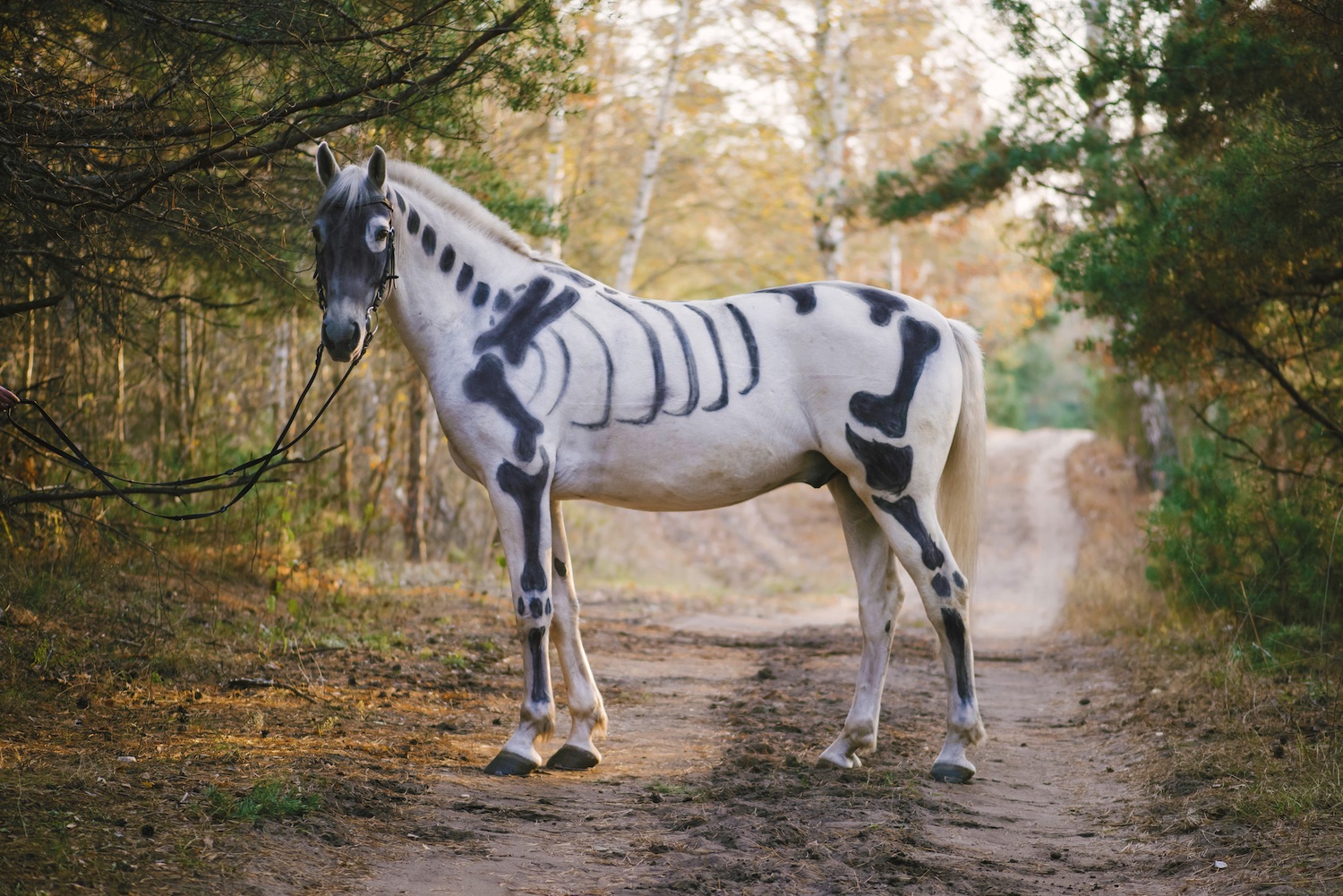October is typically a month filled with sweet treats, fun parties, and cool costumes. And although your horses may not go trick or treating this year, there are lots of fun Halloween-themed shows, parades, and other events which encourage and reward great horse and rider costumes. The sky’s the limit with ideas, but a relatively easy way to transform your horse that doesn’t require a sewing machine is with a nift design and paint.
Not all paint is created equal, and many are potentially harmful to your horse. With different chemicals, compounds, and glitters it is important to ensure that you select a product that is suitable for your horse, and won’t cause harm. Here are a few points to look out for when selecting your paint:
Pet-Safe Brands
When searching for suitable paint it is best to try and locate a pet-safe brand. Remember to do your research and read reviews.
Non-Toxic and Washable
Ensure that the paint you are using is non-toxic, and that the paint is easily washable. Paints that are toxic or permanent may lead to a medical emergency, skin irritation, or may stain your horse’s fur or skin.
Glitter
If you plan on using glitter or glitter paint on your horse, consider a biodegradable glitter that is safe for use on animals. Try and avoid placing glitters near sensitive areas, or on parts of the body that may easily fall or rub off into feed and water buckets, risking ingestion.
Application
Once you have planned your design, practice your application. Brushes, sponges, spatulas, and even fingers make great tool options for applying the paint to your horse’s coat. Stencils are another great tool. These can be purchased or made at home, and can aid in creating a crisp and uniform design.
Other important considerations:
-Wear gloves when working with paint to avoid staining your hands.
-Remember to always do a patch test for any new product on your horse.
-Avoid aerosol spray paints which are often toxic, and harmful to your horse’s respiratory system.
-Avoid sensitive areas like the eyes, nose, and mouth.
-Do not paint any wounds, cuts, abrasions, or areas in the process of healing.
-Remove any paint after your event with soap and water. Take particular care when removing any paint on the horse’s face, avoiding any product or soap getting in the horse’s eyes, nose, or mouth.

